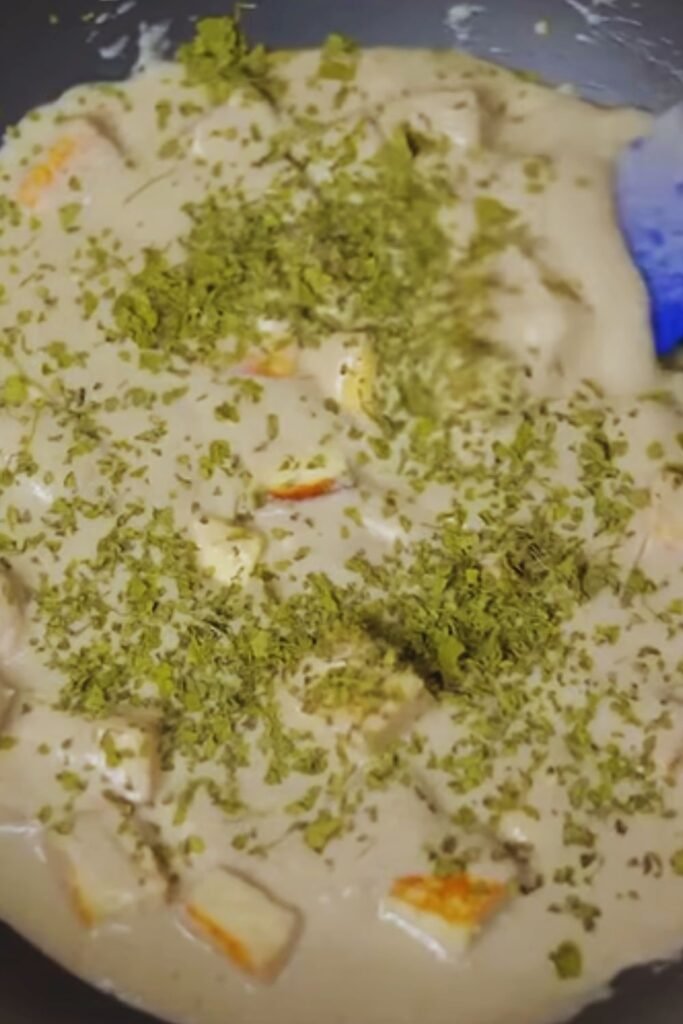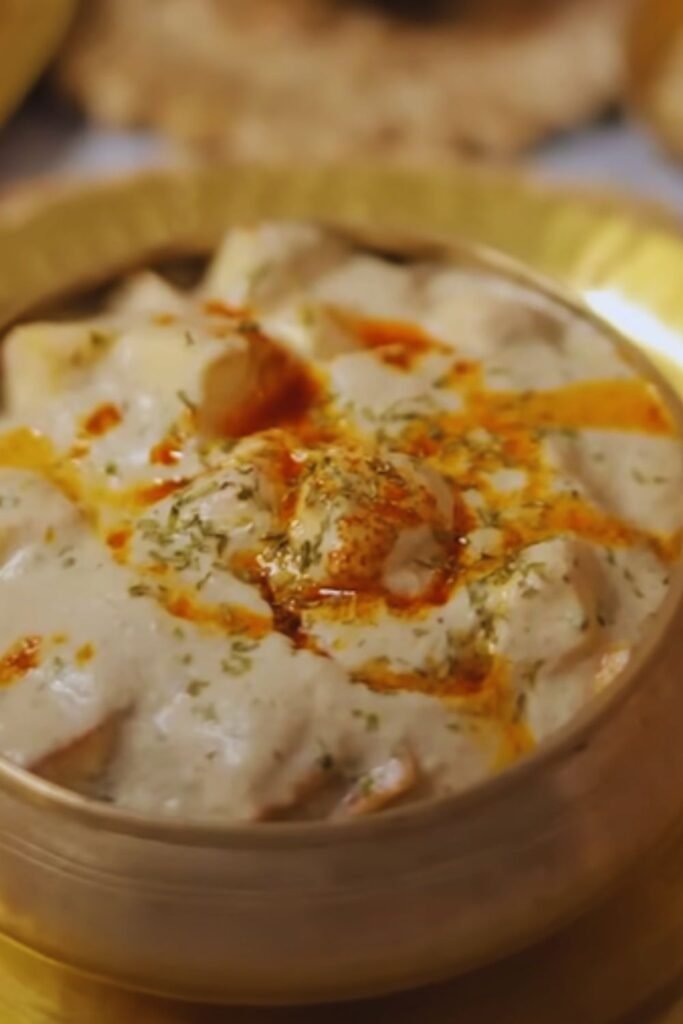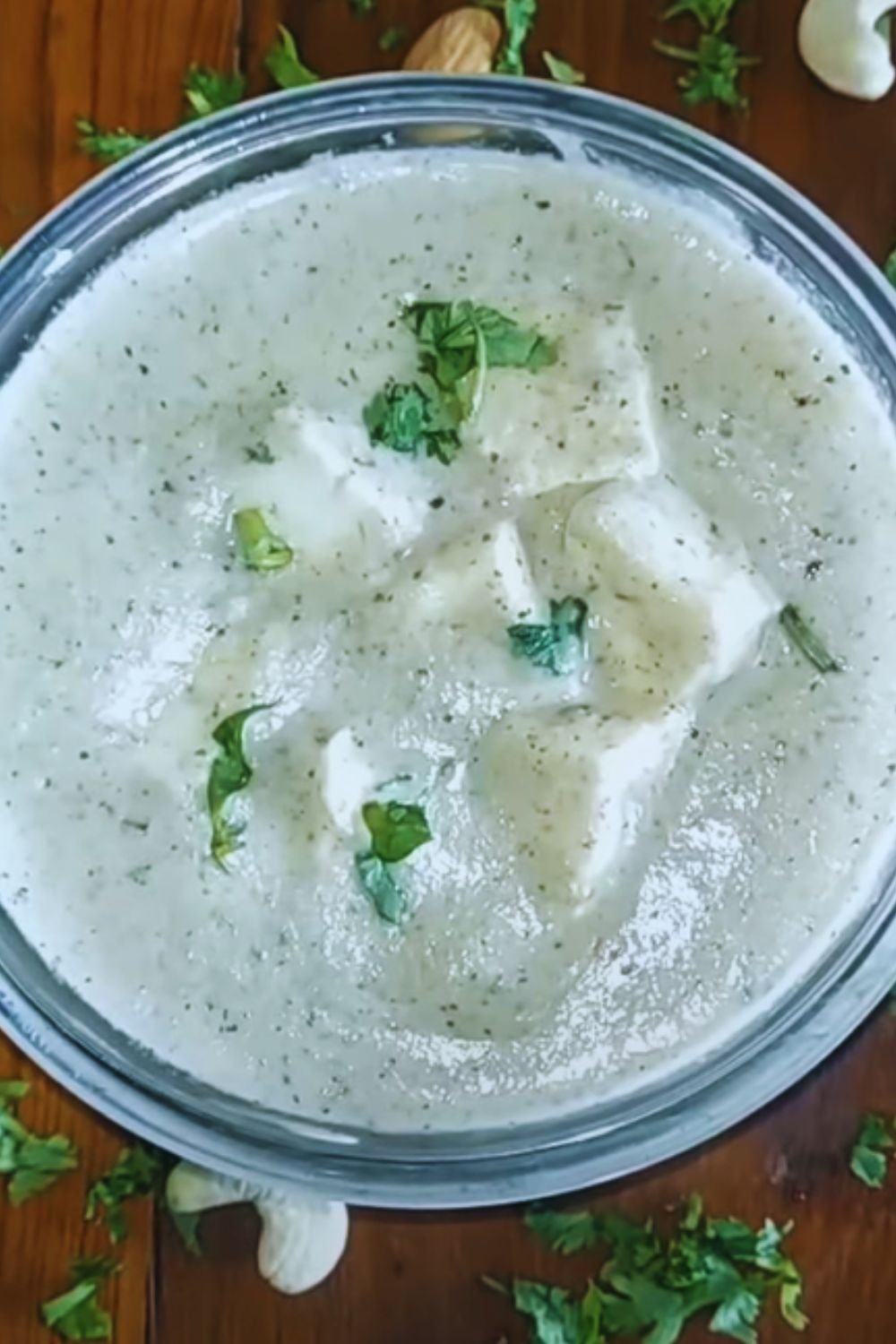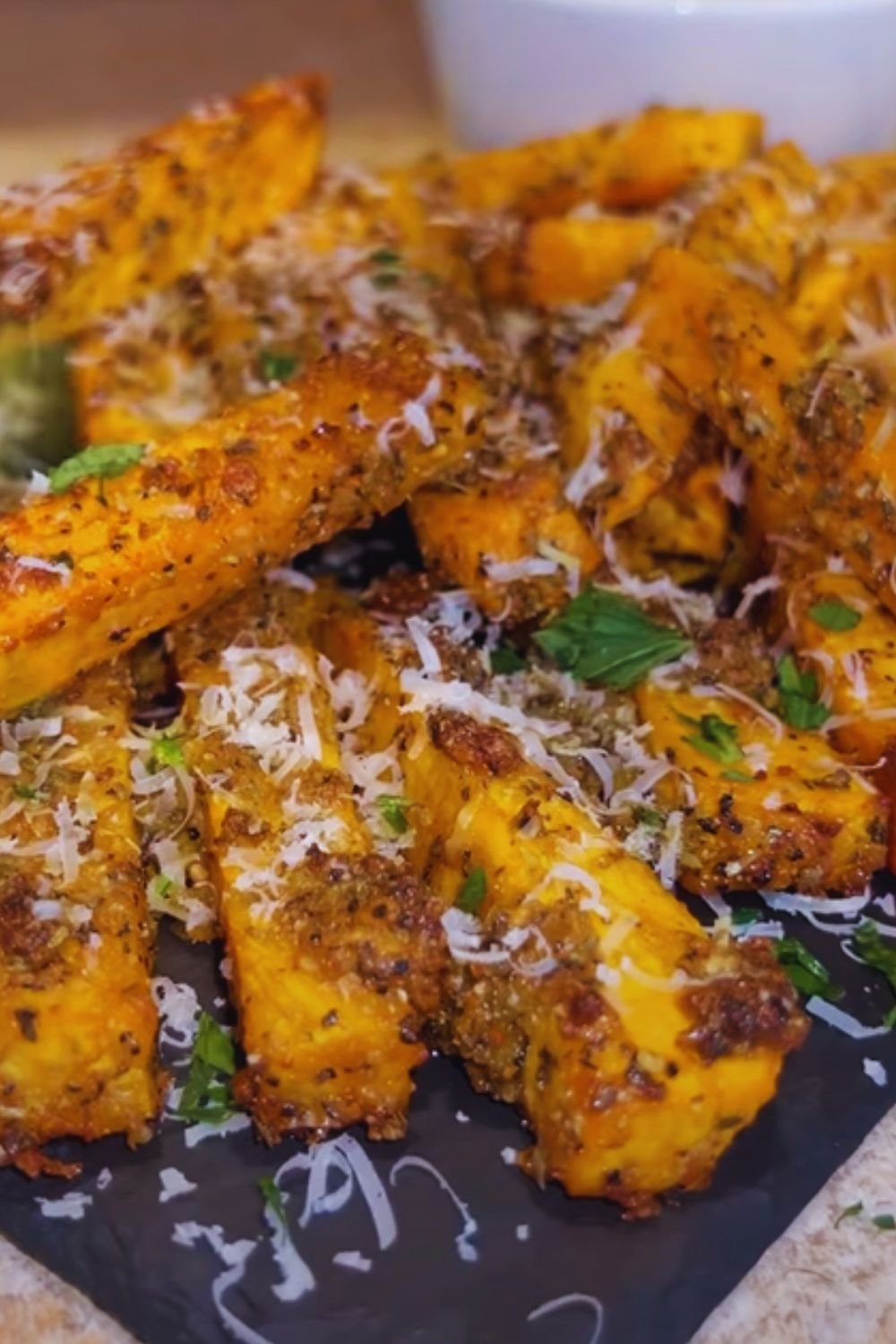There’s something truly magical about a perfect white gravy. Creamy, peppery, and versatile, this humble sauce transforms ordinary meals into comforting classics. I’ve spent years perfecting my white gravy technique, and today I’m sharing everything I know about creating this Southern staple right in your own kitchen.
Whether you’re looking to smother biscuits for a hearty breakfast, elevate your mashed potatoes, or create the foundation for a delicious country-fried steak dinner, this easy homemade white gravy recipe will become your new go-to comfort food essential.
What Exactly Is White Gravy?
Before diving into the recipe, let’s understand what makes white gravy special. Unlike brown gravies that get their color and flavor from meat drippings or stock, white gravy (also called cream gravy or sawmill gravy in parts of the South) starts with a roux made from fat and flour, then incorporates milk or cream for a pale, creamy result.
The beauty of white gravy lies in its simplicity – with just a handful of ingredients, you can create a velvety, flavorful sauce that enhances almost any savory dish. Traditionally associated with Southern American cuisine, white gravy has become a beloved staple across the country.
Essential Ingredients for Perfect White Gravy
The foundation of any great white gravy is quality ingredients. Here’s what you’ll need:
- Fat base: Butter, bacon grease, sausage drippings, or vegetable oil (each creating distinctive flavor profiles)
- All-purpose flour: The thickening agent that creates the crucial roux
- Milk or cream: The liquid that transforms your roux into creamy gravy
- Salt and freshly ground black pepper: The classic seasonings that define white gravy’s flavor profile
- Optional flavor enhancers: Garlic powder, onion powder, cayenne pepper, or herbs to customize your gravy
What makes white gravy so appealing is its adaptability. I’ve made countless variations over the years, and I’m continually impressed by how small changes in technique or ingredients can create entirely different flavor experiences.
The Science Behind Perfect White Gravy
Understanding the science behind white gravy has dramatically improved my results. At its core, white gravy relies on three critical elements:
- The Roux: This mixture of fat and flour serves as both a thickening agent and flavor foundation. When flour is cooked in fat, the starch granules swell and absorb liquid while developing toasty, complex flavors.
- Gelatinization: As the starches in the flour heat with liquid, they undergo gelatinization – a process where starch molecules absorb water, swell, and create the thick, velvety texture we associate with great gravy.
- Emulsification: The fat particles disperse throughout the liquid, creating a stable, smooth suspension that gives white gravy its luxurious mouthfeel.
When these processes work together correctly, you achieve that perfect gravy consistency – thick enough to cling to your food but not so thick it becomes pasty or gluey.
Essential Equipment for White Gravy Success
While white gravy doesn’t require fancy equipment, having the right tools makes the process much more manageable:
- Heavy-bottomed skillet or saucepan: Distributes heat evenly and prevents hot spots that can burn your roux
- Whisk: Essential for incorporating liquid smoothly and preventing lumps
- Measuring cups and spoons: For accuracy, especially when you’re first learning
- Wooden spoon or heat-resistant spatula: Helpful for scraping the pan bottom to incorporate all the flavor
- Strainer (optional): For perfectly smooth gravy if any lumps appear
I learned through trial and error that a heavy cast iron skillet makes an excellent gravy pan – it maintains consistent heat and develops wonderful flavor over time.

Basic Homemade White Gravy Recipe
Now, let’s get cooking with my foolproof white gravy recipe:
Ingredients:
- 2 tablespoons unsalted butter (or bacon/sausage drippings)
- 2 tablespoons all-purpose flour
- 1½ cups whole milk (room temperature works best)
- ½ teaspoon salt (adjust to taste)
- 1 teaspoon freshly ground black pepper (more for a speckled country-style gravy)
- ⅛ teaspoon garlic powder (optional)
Instructions:
- Prepare your fat base: Melt butter in a heavy skillet over medium heat. If using meat drippings, warm them until just melted.
- Create your roux: Sprinkle flour evenly over the melted fat. Whisk continuously for 2-3 minutes until the mixture is smooth and blonde in color. This cooking process eliminates the raw flour taste that can ruin gravy.
- Add liquid gradually: Slowly pour in about ¼ cup of milk while whisking vigorously to prevent lumps. Once incorporated, continue adding milk in small amounts, whisking constantly until all milk is added.
- Season and simmer: Add salt, pepper, and any optional seasonings. Bring the gravy to a gentle simmer, reducing heat if necessary.
- Achieve proper consistency: Simmer for 3-5 minutes, whisking occasionally, until the gravy reaches your desired thickness. Remember that gravy will continue to thicken slightly as it cools.
- Taste and adjust: Remove from heat and taste. Adjust seasonings as needed before serving.
This basic recipe yields approximately 1½ cups of gravy, perfect for serving 3-4 people.
Troubleshooting Common White Gravy Problems
Even experienced cooks occasionally encounter gravy challenges. Here’s how I address the most common issues:
Lumpy Gravy
Problem: Flour has clumped instead of incorporating smoothly. Solution:
- Prevention is best – whisk constantly while adding liquid and add liquid gradually
- If lumps appear, whisk vigorously to break them up
- For stubborn lumps, strain gravy through a fine-mesh sieve
- In desperate situations, blend smooth in a blender (be careful with hot liquids!)
Gravy Too Thin
Problem: Gravy lacks body and runs rather than clings to food. Solution:
- Continue simmering to reduce and concentrate
- Create a slurry (equal parts cold water and flour whisked together) and add gradually while simmering
- Add a small amount of cornstarch slurry for emergency thickening
Gravy Too Thick
Problem: Gravy is pasty or gluey rather than pourable. Solution:
- Gradually whisk in additional warm milk until desired consistency is reached
- Add warm milk or cream rather than cold to prevent temperature shock
Bland Gravy
Problem: Flavor lacks depth or complexity. Solution:
- Season gradually and taste frequently
- Freshly ground black pepper makes a significant difference
- Consider adding umami elements like a tiny splash of Worcestershire sauce
- A small amount of chicken bouillon can add savory depth
White Gravy Variations to Elevate Your Cooking
Once you’ve mastered the basic technique, experimenting with variations opens up endless possibilities:
Sausage Gravy
The ultimate breakfast gravy. Brown ½ pound of breakfast sausage in your skillet, remove meat but leave the drippings, then proceed with the basic recipe. Return crumbled sausage to finished gravy before serving.
Bacon Gravy
Save bacon drippings whenever you cook bacon. Use 2 tablespoons as your fat base for incredible smoky flavor, and crumble cooked bacon into the finished gravy for texture and taste.
Herb-Infused Gravy
Add chopped fresh herbs like thyme, sage, or rosemary to your finished gravy for an aromatic twist. A tablespoon of fresh herbs or a teaspoon of dried herbs works well.
Onion Gravy
Sauté ¼ cup finely diced onions in your fat until translucent before adding flour. The sweetness and texture of the onions add wonderful complexity.
Cheese Gravy
Stir ½ cup of shredded sharp cheddar, Monterey Jack, or Gruyère into hot (but not boiling) gravy until melted. Perfect for vegetable dishes or biscuits.

Nutritional Information and Calories
Understanding the nutritional content of your gravy can help you make informed decisions about your meals. While white gravy isn’t exactly health food, it can be enjoyed in moderation as part of a balanced diet.
Here’s a nutritional breakdown for the basic recipe (per ¼ cup serving):
| Nutrient | Amount | % Daily Value* |
|---|---|---|
| Calories | 95 | – |
| Total Fat | 7g | 9% |
| Saturated Fat | 4g | 20% |
| Cholesterol | 18mg | 6% |
| Sodium | 307mg | 13% |
| Total Carbohydrates | 6g | 2% |
| Dietary Fiber | 0g | 0% |
| Sugars | 2g | – |
| Protein | 2g | 4% |
| Calcium | 73mg | 6% |
| Iron | 0.2mg | 1% |
*Based on a 2,000 calorie diet
For lighter versions, consider these modifications:
- Use 2% or skim milk instead of whole milk
- Reduce butter to 1 tablespoon
- Use olive oil instead of animal fats
Perfect Pairings: What to Serve with White Gravy
White gravy enhances countless dishes. Here are my favorite serving suggestions:
Breakfast Pairings
- Buttermilk biscuits (the classic pairing)
- Breakfast potatoes or hash browns
- Country ham steaks
- Fried eggs with toast
Dinner Pairings
- Chicken fried steak or chicken fried chicken
- Mashed potatoes
- Fried pork chops
- Steamed vegetables like green beans
Creative Applications
- Loaded gravy fries
- Open-faced turkey sandwiches
- Gravy bowls with biscuit dippers
- Savory crepes filled with scrambled eggs and topped with gravy
Storing and Reheating White Gravy
White gravy is at its absolute best when freshly made, but sometimes you’ll have leftovers. Here’s how to handle them:
Storage Guidelines
- Refrigerate promptly in an airtight container
- Keeps for 3-4 days in the refrigerator
- Freeze for up to 3 months (though texture may change slightly)
Reheating Methods
- Stovetop (preferred method): Reheat gently over low heat, whisking frequently. Add a splash of milk to restore consistency.
- Microwave: Heat in 30-second intervals at 50% power, stirring between each interval. Cover loosely to prevent splatters.
- Double boiler: For gentle, even reheating without risk of burning, place gravy in the top of a double boiler over simmering water.
Regardless of method, gravy will likely thicken during storage. Have additional warm milk on hand to adjust consistency as needed.
Common Questions About White Gravy
After years of making white gravy and teaching others, these are the questions I’m most frequently asked:
Q: Why does my gravy taste like raw flour? The key is cooking your roux long enough. The flour needs to cook for at least 2-3 minutes to eliminate that raw flavor. Keep the heat medium – too low won’t cook the flour properly, too high risks burning.
Q: Can I make white gravy ahead of time for a big meal? Yes, but it’s best made within a day of serving. Reheat gently with additional milk to restore consistency, and whisk vigorously to recombine any separated components.
Q: What’s the difference between country gravy and white gravy? They’re essentially the same thing, though country gravy often has more black pepper and sometimes includes meat drippings or meat pieces. Regional terminology varies throughout the South.
Q: Can I make white gravy dairy-free? Absolutely! Use plant-based butter and unsweetened, unflavored plant milk. Almond milk works well, but my preference is oat milk for its creamier texture. Adjust thickness as needed, as plant milks have different thickening properties.
Q: How do I make a larger batch for a crowd? Simply scale up the recipe maintaining the same ratios: 1 part fat to 1 part flour to 6-8 parts liquid. Just ensure your cooking vessel is large enough, and add the milk more gradually when working with larger quantities.
Q: Why did my gravy separate after refrigeration? This is normal and easily fixed. Simply reheat gently while whisking continuously to reintegrate the components.
Q: What’s the secret to restaurant-quality white gravy? Seasoning is key! Don’t be shy with the black pepper, and taste as you go. Most restaurant gravies also use a combination of heavy cream and milk for extra richness.
The Cultural Significance of White Gravy
White gravy has deep roots in American Southern cuisine, born from necessity and ingenuity. During challenging economic times, particularly in rural areas, cooks needed to make the most of limited ingredients. White gravy transformed humble foods like biscuits into filling, satisfying meals.
The tradition of making white gravy has been passed down through generations, with regional variations emerging throughout the South. In Texas, you might find it made with beef tallow, while in parts of Appalachia, it might include country ham drippings for a saltier profile.
As someone who grew up watching my grandmother make white gravy in a cast-iron skillet that was older than she was, I appreciate how this simple sauce connects us to our culinary heritage. Learning to make excellent white gravy isn’t just about following a recipe – it’s about participating in a living tradition.

Advanced Tips for White Gravy Mastery
After years of making white gravy in countless kitchens, I’ve discovered some advanced techniques that can elevate your gravy from good to exceptional:
Layering Flavors
Start by infusing your fat with aromatics like minced shallots, crushed garlic cloves, or fresh herbs. Strain them out before adding flour if you want smooth gravy, or leave them in for texture and visual appeal.
Temperature Control
Room temperature milk incorporates much more smoothly than cold. If you forget to set it out ahead of time, gently warm it in the microwave until just tepid.
Resting Period
Allowing your gravy to rest for 5 minutes off heat before serving allows flavors to meld and can improve texture. Just whisk again before serving.
Reduction Technique
For incredibly concentrated flavor, try reducing your milk by about 25% in a separate pan before adding it to your roux. This creates a more intense dairy flavor and richer mouthfeel.
Dual-Fat Method
For exceptional flavor development, try using two different fats – perhaps butter for richness and bacon fat for smokiness. This creates complexity that’s hard to achieve with a single fat source.
Final Thoughts on Homemade White Gravy
White gravy embodies the heart of comfort food cooking – simple ingredients transformed through technique into something greater than the sum of their parts. There’s something deeply satisfying about mastering this fundamental sauce, whether you’re making it for a special breakfast, a holiday dinner, or just a random Tuesday when you need some culinary comfort.
I encourage you to start with the basic recipe, then experiment with variations that speak to your personal taste and culinary heritage. White gravy is forgiving and adaptable, making it the perfect canvas for culinary creativity.
Remember that great gravy, like most cooking skills, improves with practice. Your first attempt might not be perfect, but each time you make it, you’ll develop a better understanding of how the ingredients interact and how to achieve your ideal consistency and flavor.
Whether you’re a first-time gravy maker or looking to refine your technique, I hope these recipes, tips, and insights help you create white gravy that becomes a beloved part of your cooking repertoire. There’s nothing quite like watching family and friends enjoy food you’ve prepared with care – especially when it’s smothered in delicious, homemade white gravy.


